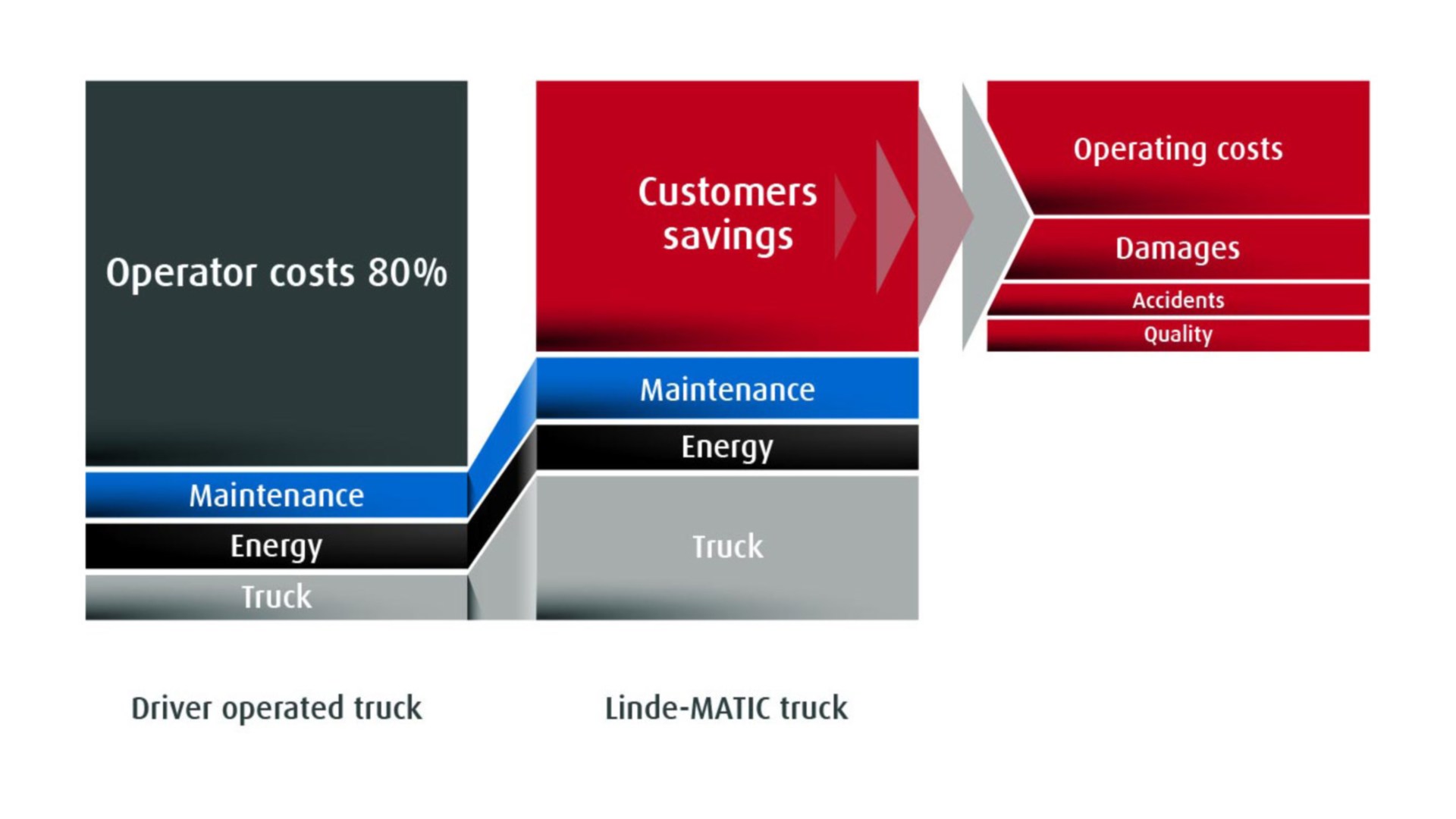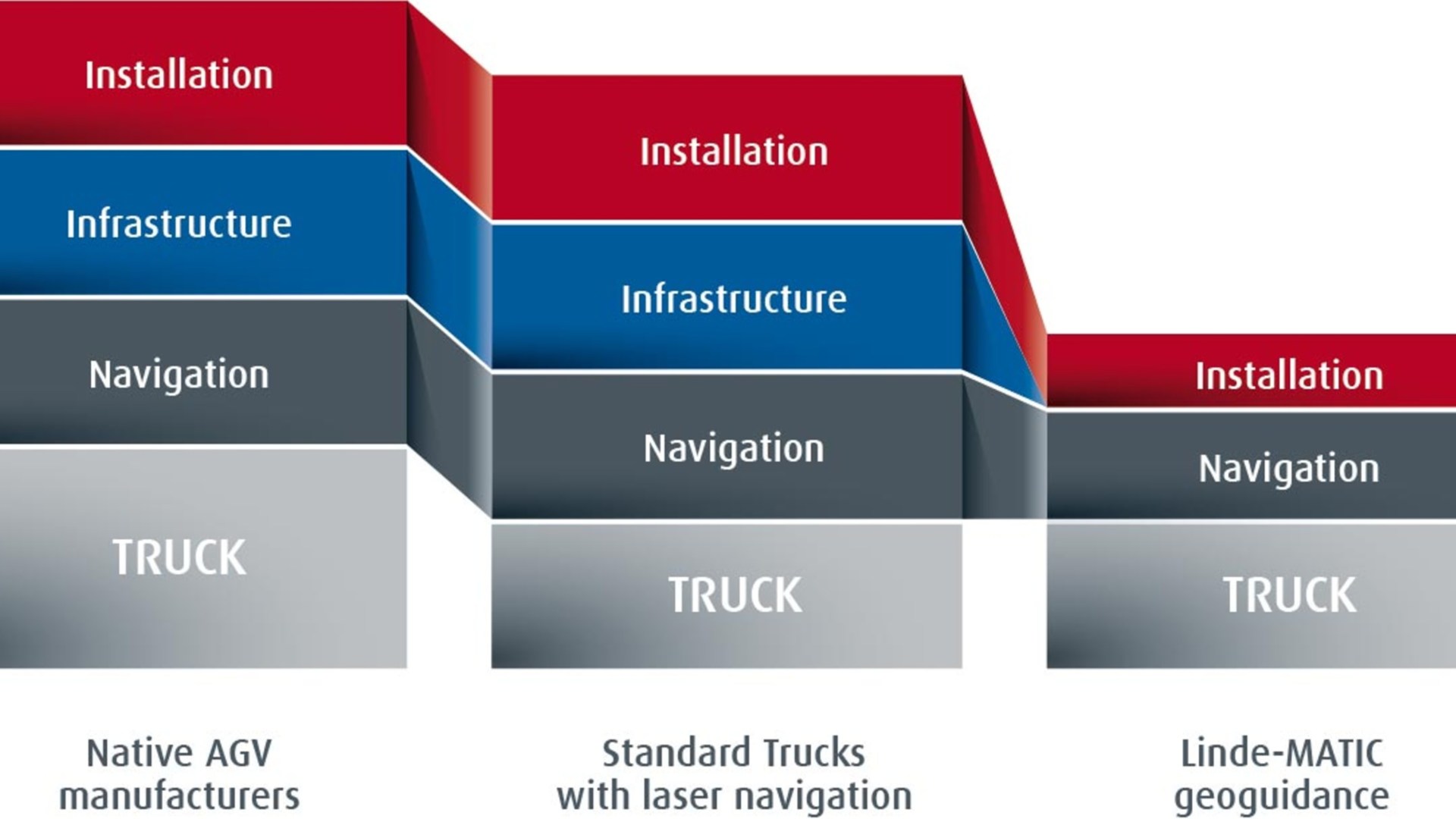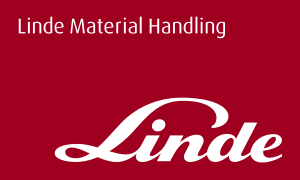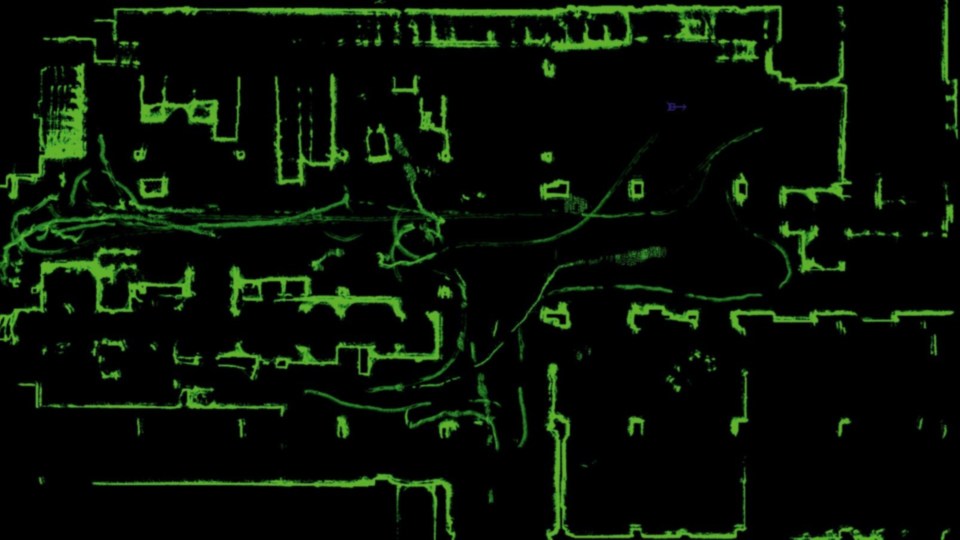Flexible Automation for Intralogistics
AUTOMATION
Flexible Automation for Intralogistics
AUTOMATION

LINDE ROBOTICS
A smart, integrated solution
The advanced robotics technology allows the user to enjoy significant competitive advantages, while at the same time guaranteeing a high degree of flexibility in operational procedures. Highly developed safety systems and versatile, interface-capable software allow for fully integrated solutions: People and machines can interact safely and efficiently.
Why robotics?
This new generation of autonomous work tools carries out repetitive handling processes independently and reliably. They increase productivity and reduce costs. Damage to goods and facilities is reduced, and the robotic forklifts perform tasks which are tiring and uncomfortable for human operators. Furthermore, the efficiency of the material flow is increased, because job allocation and routes are optimally determined and interwoven with related tasks.



COMPETITIVE
The most cost-effective solution
The basis of every robotics solution is the tried and tested standard trucks from Linde’s serial production range. Together with innovative navigation technology, which allows the robotic trucks to orient themselves without mirrors or tracks, Linde’s MATIC range offers a reliable automation solution that helps customers to optimize their internal material flow and significantly reduce costs.
Compared to other driverless systems with DTS or standard trucks:
- Lower installation costs
- Significantly lower running costs



FLEXIBLE
NO INFRASTRUCTURE
The navigational technology does not require any fixed installation of infrastructure such as tracks or mirrors. The MATIC models can therefore simply be integrated into existing storage or production facilities.
QUICK INSTALLATION
The system recognizes structures such as racking, walls, equipment and machines. This data is compiled in a two-dimensional map, on which routes and action points such as storage spaces and transfer stations are defined. New routes or spatial alterations are quick and easy to input.
SCALEABLE SOLUTION
The technology, developed with robotics specialist Balyo, is equipped with all necessary interfaces in order to smoothly interlink automation solutions using either individual or fleets of MATIC trucks with the customer’s IT and operational processes.
COMPREHENSIVE INTEGRATION
The supervisor software controls the robotic fleet in real time. It monitors routing and allocates tasks. In addition, the software controls interaction with roller shutters, packing machines, conveyor belts, and production machinery. The entire application can interact directly with ERP (Enterprise Resource Planning) or WMS (Warehouse Management System) applications.


SAFE AND PRODUCTIVE
The best of both worlds
The basic models in Linde’s MATIC product line are already equipped with numerous safety features. With additional camera- and laser-supported spatial monitoring, the robotic forklifts always move around safely and without significant losses in productivity both when interacting with people and in traffic with other trucks,
because the safety control of MATIC forklifts reacts dynamically: when an obstacle is recognized, the truck reduces its speed, and simply stops if the person or truck in its way stays there. Even then, it will automatically resume its course when the obstacle has left the monitoring zone of its lasers and camera.
Furthermore, the robotic trucks can be operated manually at any time. If someone operates the control unit directly, then automatic operations are immediately ceased, and the truck can, for example, be moved out of a dangerous area in an emergency, or be used for an important task outside of its automated work cycle.
Comprehensive safety features for cooperative work
- 3D camera for obstacle recognition
- Lasers on front and back for obstacle recognition and load detection
- Visual and acoustic warning systems
- Emergency stop buttons on both sides


